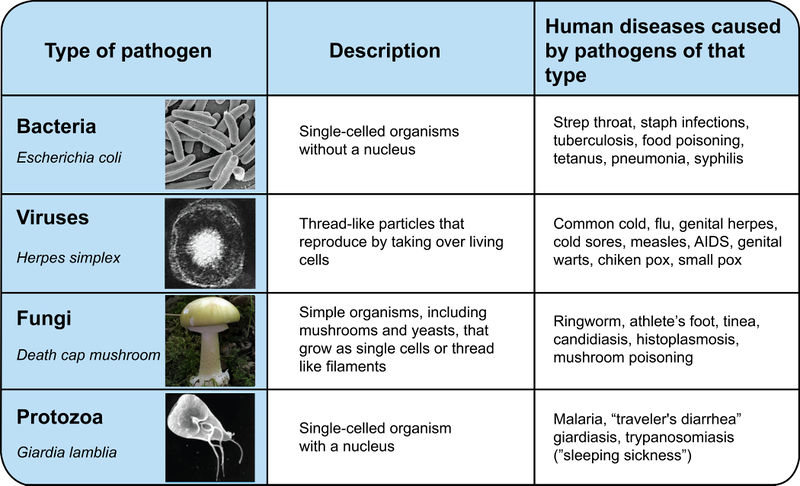It is hydrochloric acid. Stomach Stomach acid does not break down food.

Nonspecific Defenses Ck 12 Foundation
The mucous membranes lining the nose mouth lungs and urinary and digestive tracts provide another nonspecific barrier against potential pathogens.

. The mucous membranes lining the nose mouth lungs and urinary and digestive tracts provide another nonspecific barrier against potential pathogens. Host defenses that protect against infection include Natural barriers eg skin mucous membranes Nonspecific immune responses eg phagocytic cells neutrophils macrophages and their products Specific immune responses eg antibodies lymphocytes See also Overview of the Immune System Natural Barriers Skin. We call them non-specific defence systems and they can be physical or chemical barriers to pathogen entry.
Skin The skin covers almost all parts of. Up to 24 cash back A non-specific immune response is where the immune response acts broadly against a range of pathogens to immobilize and destroy them without the production of antibodies. It is part of the bodys non-specific first line of defence.
Read more and antibodies Antibodies One of the bodys lines of defense immune system involves white. 6 rows The immune system can be divided into two overlapping mechanisms to destroy pathogens. Nasal hairs Filter and trap microorganisms 5.
Examples include interleukins IL tumor necrosis factors TNF colony-stimulating factors CSF chemokines and interferons INF. Mucous membranes consist of a layer of epithelial cells bound by tight junctions. Hydrochloric acid in stomach 3.
Such invaders include Microorganisms commonly called germs such as bacteria viruses and fungi Parasites. Very fine hairs cilia lining your windpipe move mucus and trapped particles away from your lungs. Some AMPs are produced routinely by the body whereas others are primarily produced or produced in greater quantities in response to the presence of an invading pathogen.
Nonspecific Resistance Innate Immunity 3. It is the first of the nonspecific barrier defenses. The antimicrobial peptides AMPs are a special class of nonspecific cell-derived mediators with broad-spectrum antimicrobial properties.
Nonspecific Response 1stline of defensecont 1. Whereas only vertebrates have specific immune. Tears saliva Contain lysozyme Ækills pathogens 4.
The innate immune responses are the first line of defense against invading pathogens. The response is different for each invader. Skin and Mucous membranes antimicrobial chemicals natural killer cells phagocytosis inflammation and fever I Surface Membrane Barriers- skin and mucous membrane B.
The first line of cellular defense against pathogens are the a T cells. Gastric juiceÆkills pathogens 2. Membranes secrete protective chemicals 1.
Pathogens are killed or inactivated on the skin by desiccation drying out and by the skins acidity. The bodys nonspecific defenses include all of the following except a the skin. Most viral infections are limited by nonspecific defenses which 1 restrict initial virus multiplication to manageable levels 2 initiate recovery from established infections that is then completed by a combination of these early nonspecific and subsequent antigen-specific immune defenses and 3 enable the host to cope with the peak numbers of virus that if presented as.
The production of mucus in your airways is a physical barrier. Special cells line and protect the nose throat and other passages within your body. Defence mechanisms of the non-specific immune response include.
Intact skin saliva and tears plus many more that are outlined in the first and second line of defence. Up to 24 cash back It cannot create a memory so if a specific pathogen entered the body again it would restart the process and kill the pathogen which will create a slow response each time. With nonspecific defenses the protection is always the same no matter what the invader may be.
Specific immune responses can distinguish among different invaders. Defense cells and promote or inhibit a variety of nonspecific body defenses. Innate immune responses rely on the bodys ability to recognize conserved features of pathogens that are not present in the uninfected host.
Cytokines that promote inflammation by enabling white. The inner lining of your gut and lungs also produces mucus to trap invading pathogens. Ciliapropel mucus away from lower respiratory tract First-line respiratory defenses 2ndline of Nonspecific defense.
The Immune System has 3 Lines of Defense Against Foreign Pathogens. Nonspecific Defense In animals there are two types of defenses against foreign invaders. A Lymph derives from interstitial fluid.
Which of the following statements regarding lymph is false. Mucous membranes consist of a layer of epithelial cells bound by tight junctions. In addition beneficial microorganisms that coexist on the skin compete with invading pathogens preventing infection.
The first and second line defense systems form part of. Specific Resistance Acquired Immunity Physical and Chemical Barriers Innate Immunity Physical and chemical barriers form the first line of defense when the body is invaded. Acid lining of vaginaÆkills pathogens 3.
Physical and Chemical Barriers Innate Immunity 2. They are also required to initiate specific adaptive immune responses. The immune system can be divided into two overlapping mechanisms to destroy pathogens.
The immune system uses white blood cells White blood cells The immune system is designed to defend the body against foreign or dangerous invaders. The skin is considered the first defense of the innate immune system. The innate immune response which is relatively rapid but nonspecific and thus not always effective and the adaptive immune response which is slower in its development during an initial infection with a pathogen but is highly specific and effective at.
Immune System Nonspecific Defenses Opencurriculum

An Overview Nonspecific Vs Specific Defense Mechanisms Ppt Video Online Download

0 Comments